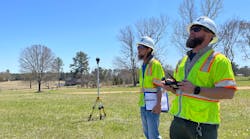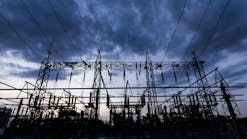Soaring Eagle Technologies, an unmanned aerial vehicle (UAV) drone data collection company servicing critical infrastructure owners across the continental United States, has obtained a BVLOS waiver to inspect up to 27 linear miles, the longest distance approved by the Federal Aviation Administration for such commercial infrastructure and transmission and distribution inspections.
This qualifies the firm as the leading commercial beyond visual line of sight (BVLOS) small unmanned aerial system (UAS) commercial service provider in the US. The 27-mile waiver results in more efficient and safer inspections for utilities and other critical infrastructure.
The core functionality of the waiver is for inspecting transmission power lines per the FAA’s Part 107.31/33 waiver. This enables the remote pilot-in-command (RPIC) to fly down range for a unique data set. The safety component that allows the BVLOS flight range depends on Iris Automation’s advanced detect-and-avoid technology (DAA) system, Casia.
The FAA BVLOS waivers are granted based on the safety standards and track record of the pilots conducting the mission. Unless they have secured a BVLOS waiver, the FAA requires drone pilots to maintain visual line of sight at all times with any drone they are operating. Soaring Eagle has completed over 60 BVLOS missions across the U.S. under SGI (special government interest) waivers, more than any other competitor. The company currently has the capabilities to patrol up to 100 miles of electrical transmission line per day with each BVLOS capable sUAS in the company’s fleet.
According to Soaring Eagle, the operations of Soaring Eagle’s sUAS operations are cleaner and safer than the fossil fuel alternatives. In addition, asset owners can save more than 50% when conducting BVLOS inspections compared to using manned aircraft (helicopters, airplanes, etc.) to do the same work.


